Dave Hunter: The Big Buzz – Origins of the Fuzz Box & Tips on Getting Fuzzy
by Dave Hunter
Prior to the transistor revolution and the radical compacting of electronics that it enabled, the only way to achieve the singing expressiveness of a raspy, dirty, fuzzy guitar tone was to crank up a tube amp beyond its intended performance levels, or maybe shred a speaker or play with a busted tube. Then solid-state tech came to town, and suddenly cranking up the gain into distorted mayhem was as easy as ramming your guitar through a couple of small resistors.
Following the accidental discovery of the sound in 1961 and the first prototypes and premarket creations of 1962, the fuzz box became what is commonly conceived as the first genuine solid-state stompbox, and has arguably been the most enduring ever since. But for many players, it’s also among the most misunderstood. Let’s roar through some of the history of this 62-year-old pedal, explore some of the classics referenced in Helix’s extensive collection, then share some tips and tricks for getting the most out of the ubiquitous fuzz box.
Broke, Busted, and … Beautiful
The world’s first commercially produced fuzz box, the Maestro Fuzz-Tone, came as the result of a happy accident in a Nashville studio in late 1960. While recording Marty Robbins’ early-1961 hit “Don’t Worry,” Nashville engineer Glen Snoddy heard an odd yet compelling fuzzy sound coming from the channel of the tube mixer through which Grady Martin was recording his bass solo. The mixer channel was busted, but the take was so vibey that they kept it: voila! Nashville’s first recorded fuzz solo.
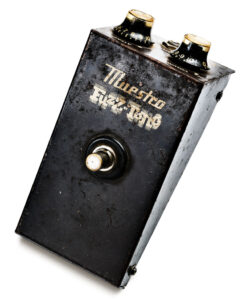
Snoddy compacted that busted preamp down to a self-contained, solid-state unit, which he then sold to Gibson affiliate Maestro in 1962. Maestro released it to the public soon after as the FZ-1 Fuzz-Tone, a pedal that attained wider fame when Keith Richards used one to record the signature riff of the Rolling Stones’ #1 hit “(I Can’t Get No) Satisfaction,” while the band was on tour in the U.S. in May of 1965.
The U.K.’s first fuzz, the Sola Sound Tone Bender Mk I, arrived a year after the Maestro Fuzz-Tone, which was initially hard to come by overseas. But other industrious Brits had already been finding their own ways to get there. In 1964, Dave Davies sliced up the speaker of a small amp in the studio to achieve the sound for the Kinks’ hit “You Really Got Me.” And that same year guitarist Big Jim Sullivan used a fuzz pedal custom-made for him by Roger Mayer to recorded a notable fuzz part on P.J. Proby’s hit single “Hold Me.”
Not long behind these, Jeff Beck used a Sola Sound Tone Bender (now referred to as a Tone Bender “Mk I”) to record The Yardbirds’ single “Heart Full of Soul,” which was actually released just before the Stones’ “Satisfaction” in 1965, but wasn’t quite as big a hit. Paul McCartney, Mick Ronson, Pete Townshend, Jimmy Page, and several others plugged into Tone Benders the same year. Fuzz was out of the box, and soon virtually every gear manufacturer in the market was producing their own fuzz pedal, or rebranding one from another maker.
A Factory of Fuzz
Amid the huge selection of both updated and legacy fuzz pedals available in the Helix Distortion block are several undeniable classics. Alongside these are numerous recreations of the quirkier circuits that have grabbed players’ attention with their ability to bend the effect beyond the usual parameters. Given the accuracy of HX modeling technology, it’s worth considering the characteristics of a few of these, whether you’re planning to use originals (or accurate reissues thereof), or their emulations in the digital realm.
Classics
Buzz Saw
Inspired by the Maestro Fuzz-Tone, the Buzz Saw is sharp, a little harsh, and just the right bit of nasty—a razzy-sounding, old-school fuzz with good sustain and surprisingly decent articulation. It screams (operative word) “vintage fuzz tone” in a way that gets you heard in the mix, but is not without a touch of smoothness and sweetness thanks to the character of the germanium transistors at the heart of the circuit.
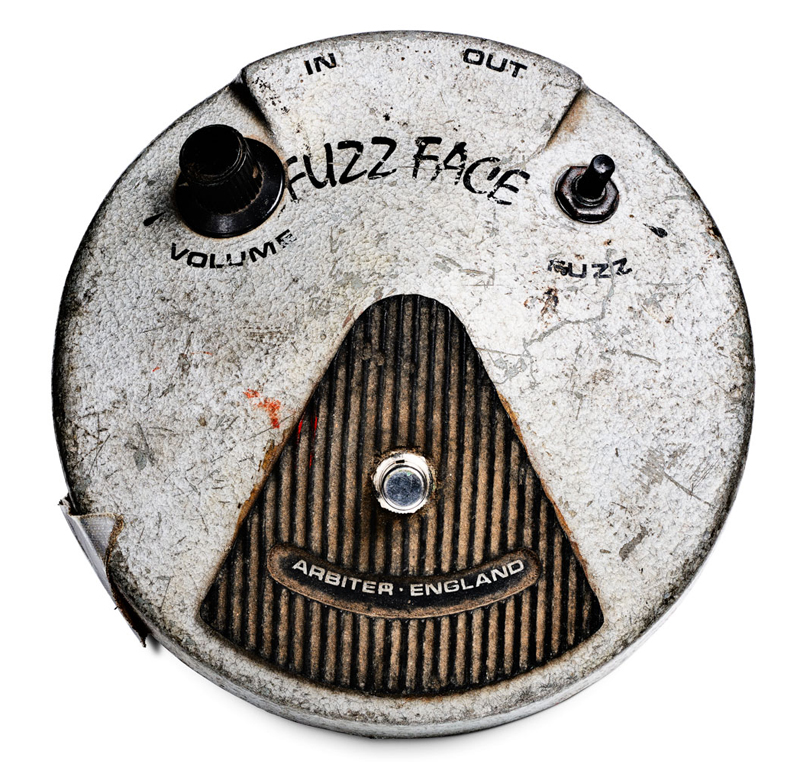
Arbitrator Fuzz
An homage to the Arbiter Fuzz Face often seen beneath the feat of Jimi Hendrix and others, this is another early classic. Raw, spitty, and glitchy by nature, it also has some classic ’60s warmth to help tame the aggression. The Fuzz Face is often considered a very musical and dynamic fuzz circuit that a player can work with pick attack and guitar-volume adjustments to achieve added expressiveness.
Jumbo Fuzz
Focusing on Vox’s Italian-made rebranding of the Sola Sound Tone Bender, this mammoth golden-age fuzz is bright and in-your-face, but with plenty of girth to the tone. It excels at anything from psychedelic pop-rock to proto-metal, with distinctly Brit-leaning influences in a sonic signature that instantly rewinds you to the late ’60s.
Bighorn, Triangle, Dark Dove, Fuzz Pi
Given the extent to which it evolved through the ’70s following its origins at the turn of the decade, there’s no single classic Electro-Harmonix Big Muff Pi circuit—but several that have each been identified as favorites. The earliest version, dubbed the Triangle for the shape of its three-knob layout, tapped four silicon transistors to produce a fuzz that’s thick, warm, and smooth, yet with good articulation and bags of sustain.
The Bighorn represents the “Ram’s head” unit of around 1973 (so called for the Ram-like graphic), the second incarnation of the Big Muff, which is known to have a somewhat scooped voice with surprisingly good note articulation—a circuit sometimes described as being halfway between a fuzz and a genuine distortion pedal. Representing the start of E-H’s Eastern-bloc reissues, the Dark Dove models the Russian-made Big Muffs of the early ’90s. Helping to power many grunge and alt-rock bands of that decade, it was a meaty fuzz with thick lows and cutting highs.
Pocket Fuzz
Although the original looked like it was made by a company that considered these things toys rather than creative tools, the Jordan Boss Tone is a great-sounding oddball fuzz that many players consider a classic. Little known in musical instrument circles, the Jordan company segued into solid-state pedals and guitar amps in the ’60s after making X-ray machines and Geiger counters in previous decades, and the Boss Tone—a small, plastic, two-control unit that plugged directly into the guitar’s jack—is its best-remembered release. Dialed in just right, it sounds full, rich, and expressively musical, with the capacity to be soft and warm or trebly and harsh. Fun!
Quirks
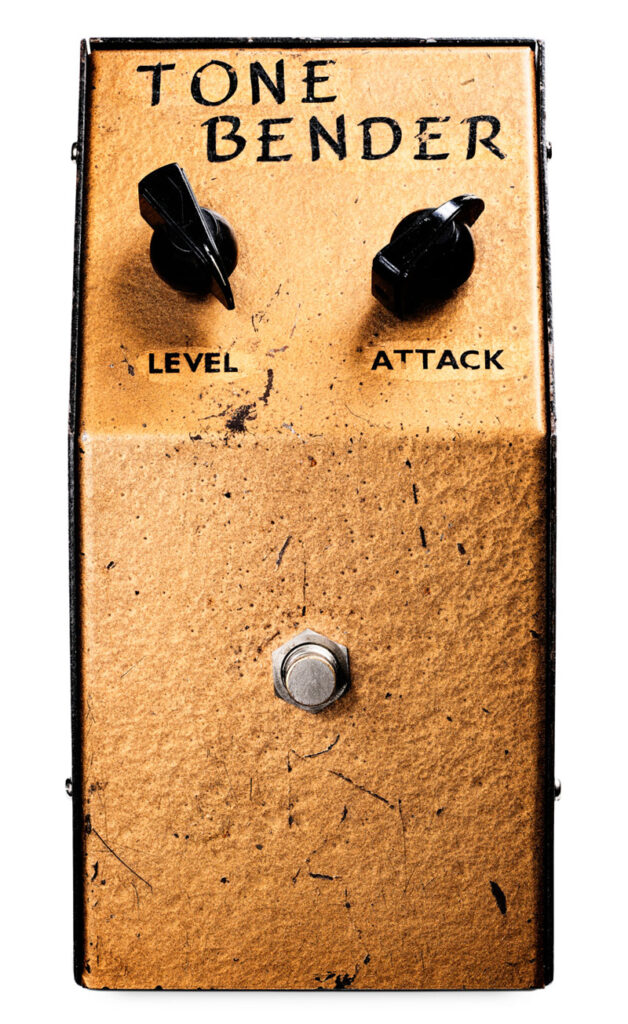
Jet Fuzz
Inspired by one of the earliest pedals from Japanese electronics legend Roland, the Jet Phaser of 1975, the Jet Fuzz includes an enticing analog-flavored phaser swirl with its fuzz tone, although that can be dialed to minimal impact to let the fuzz aspect breath through more prominently. Make no mistake—the phaser side of this is very cool, too—but with the Rate and Feedback turned down to minimum a warm, thick, rich fuzz emerges with just the slightest slow-churning phasing for added texture. Fun and funky stuff, however you use it.
Bronze Master
Released in 1972 by the originators of the Fuzz-Tone, Maestro, the Bass Brassmaster BB-1 was a new and original fuzz circuit blended with an octave-up effect. Originally intended for bass (and used effectively as such by Chris Squire of Yes, among others) it became a favorite of many guitarists, too, for the synth-like way in which it can crunch a note. Nasty, glitchy, and raw, it freaks out beautifully if you hit it with any two-note intervals it isn’t happy about, but ends up sounding surprisingly expressive and musical when used well.
Tycoctavia Fuzz
The ultimate psychedelic fuzz, this one’s based on the legendary Tycobrahe Octavia, an octave-fuzz in which the two aspects of the effect are eternally linked in a doomy sludge of glitchy mayhem. The original was derived directly from the circuit of Roger Mayer’s Octavia, a pedal custom-built for just a handful of players—Jimi Hendrix included—but not commercially released at the time. The Tycoctavia often does its thing most reliably when hit by a single-coil pickup in the neck position, with the guitar’s tone control rolled down a little to help it track the signal better.
Industrial Fuzz
Based on what might be considered a “modern classic,” though one that’s been with us for nearly three decades, the Industrial is based on the Z.Vex Fuzz Factory, a compact but incredibly versatile pedal designed by Zachary Vex in the mid ’90s. Kind of a five-knob, “all fuzzes in one” creation, it can be about as sweet or as crazy as you want it to be, from warm and fat to sharp and edgy. Add in dying battery and ripped-Velcro shades to taste, and you’re off!
Fuzz Tips and Tricks
Like most overdrive and distortion pedals, you can often simply point each of a fuzz pedal’s controls to noon (or 50% on the HX models’ block parameter sliders) and achieve a usable sound. As archaic as it might seem, though, the humble fuzz pedal can be one of the most dynamic and playable stomp boxes around when used well, and there are several ways in which you can take it beyond the simple plug-and-play approach.
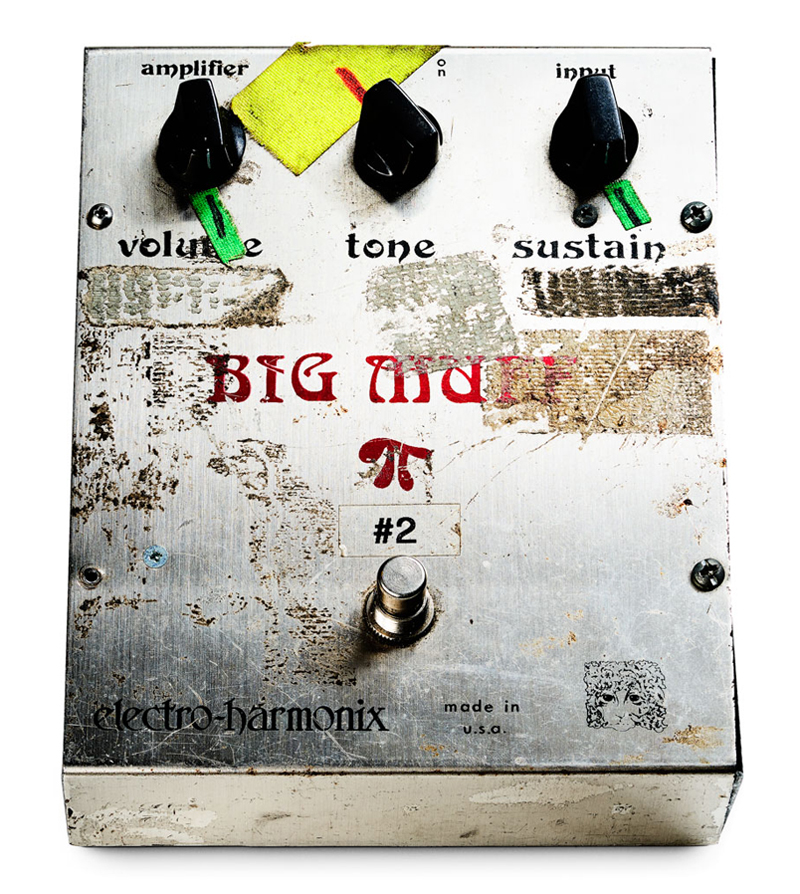
Turn it Down!
The most basic of these techniques, which all of the most fuzz-friendly artists use to their advantage, is lowering the guitar’s volume control to elicit rich cleans from a pedal that would otherwise seem to be made for pure dirt. Achieving a result different from that of simply switching off the pedal, setting an ideal fuzz tone and then dialing down the guitar itself can yield a textured, characterful breed of clean tone that’s different from your straight-to-amp sound, and remarkably expressive.
Then, when full-scale dirt is required for soloing or heavy rhythm work, just roll the guitar volume back up—without ever having to stomp a switch. This is something Jimi Hendrix, Jeff Beck, and loads of other great fuzz users knew how to do expertly, and it’s easy to throw into your own repertoire with a little practice.
Lighten Up!
Somewhat akin to turning down the guitar’s volume control, simply lightening up on your pick attack will clean up many good fuzz pedals somewhat. The better of the old-school circuits react very directly to the strength of the signal at the input, and a lighter touch on the strings drops that voltage level down enough to send a cleaner tone all the way to the pedal’s output. The other benefit of working with your picking dynamics in this way is that you can then hit the strings harder for a full-on fuzz assault.
Roll Off
Whereas many drive pedals just sound dull and muffled when you reduce your guitar’s tone control(s), a good fuzz pedal can achieve near-synth-like expressiveness and faux-octave effects when this technique is applied correctly. Many players will be familiar with Eric Clapton’s so-called “woman tone” into a cranked Marshall, but approaching a fuzz pedal the same way often makes an easier means of achieving that flute-y, vocal-like sound.
Try rolling your guitar’s tone control to minimum—and this is generally best achieved on the neck pickup—then playing lead runs higher up the neck, with judicious palm muting of open strings to help individual notes ring out. Fingering notes near the 12th fret while picking close to the end of the fingerboard (near that two-octave node, the position of the would-be 24th fret) often yields a sound not unlike an octave-fuzz, or something reminiscent of the legato of a vintage analog synth.
From its expressivity and musicality to its ability to unleash all-out mayhem, the fuzz box is an extraordinarily creative tool, even if it’s one of the oldest in the pedal lexicon. Explore some of these fuzz-induced sounds, and more, to discover what they can do for your own playing.
Photos courtesy of Eilon Paz. Photos are from his books Stompbox: 100 Pedals of the World’s Greatest Guitarists and Vintage & Rarities: 333 Cool, Crazy and Hard to Find Guitar Pedals.

Dave Hunter is the author of The Guitar Amp Handbook, British Amp Invasion, The Gibson Les Paul, Fender 75 Years, and several other books, and is a regular contributor to Guitar Player, Vintage Guitar, and The Guitar Magazine (UK).
Related posts
Leave a Reply
You must be logged in to post a comment.
By submitting your details you are giving Yamaha Guitar Group informed consent to send you a video series on the Line 6 HX Stomp. We will only send you relevant information. We will never sell your information to any third parties. You can, of course, unsubscribe at any time. View our full privacy policy

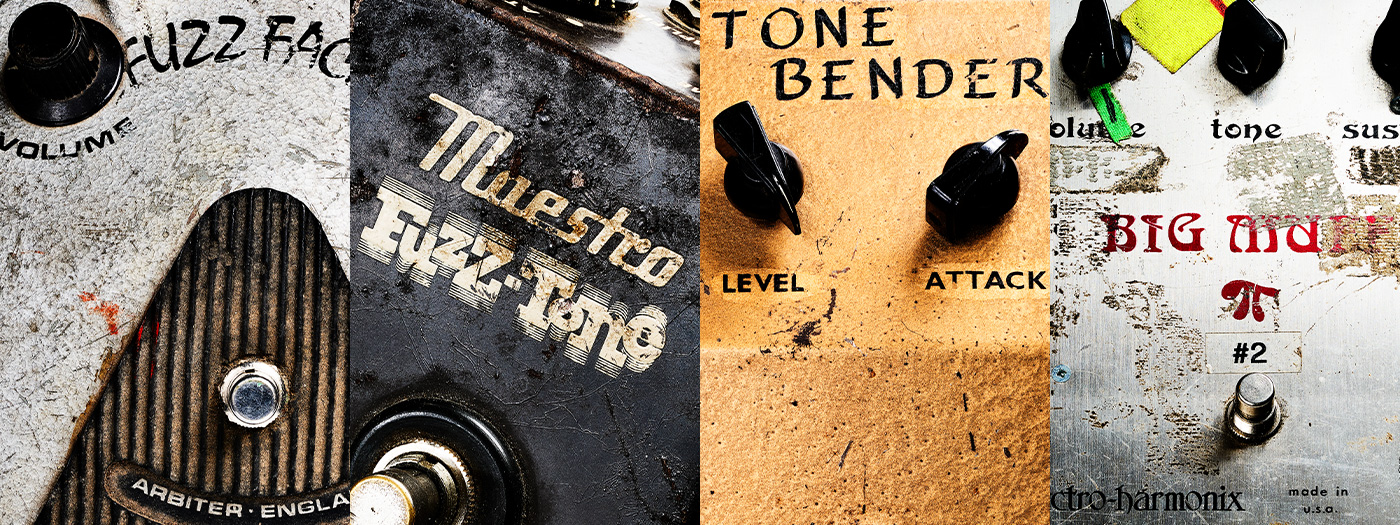
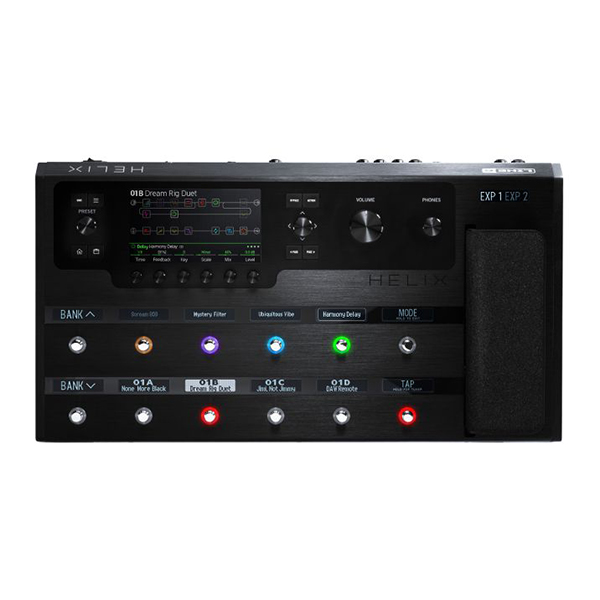
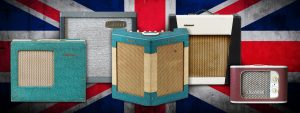

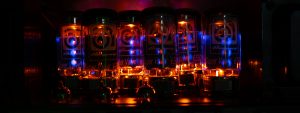
What a beautiful article! I’m so addictive to keep my right hand -ring finger on the tone knob…
It feels good to read it w/ more ideas 🙂
Thanks Dave & L6 for this!!
O